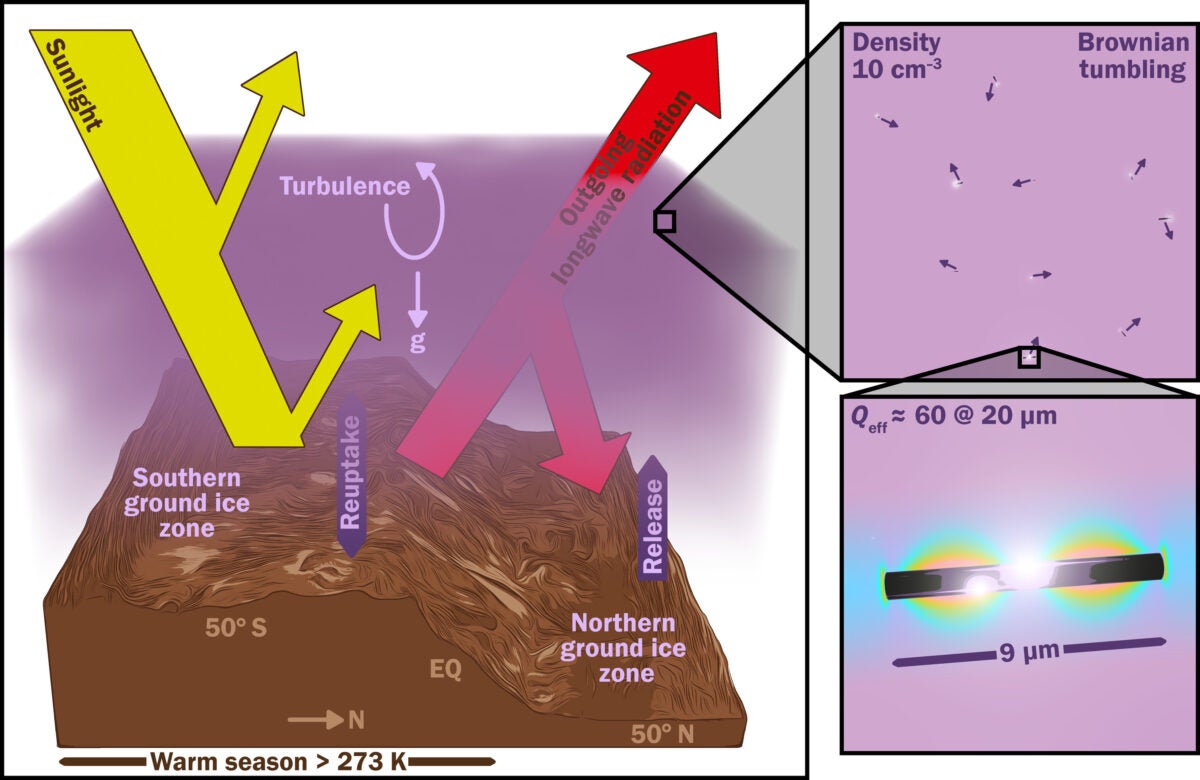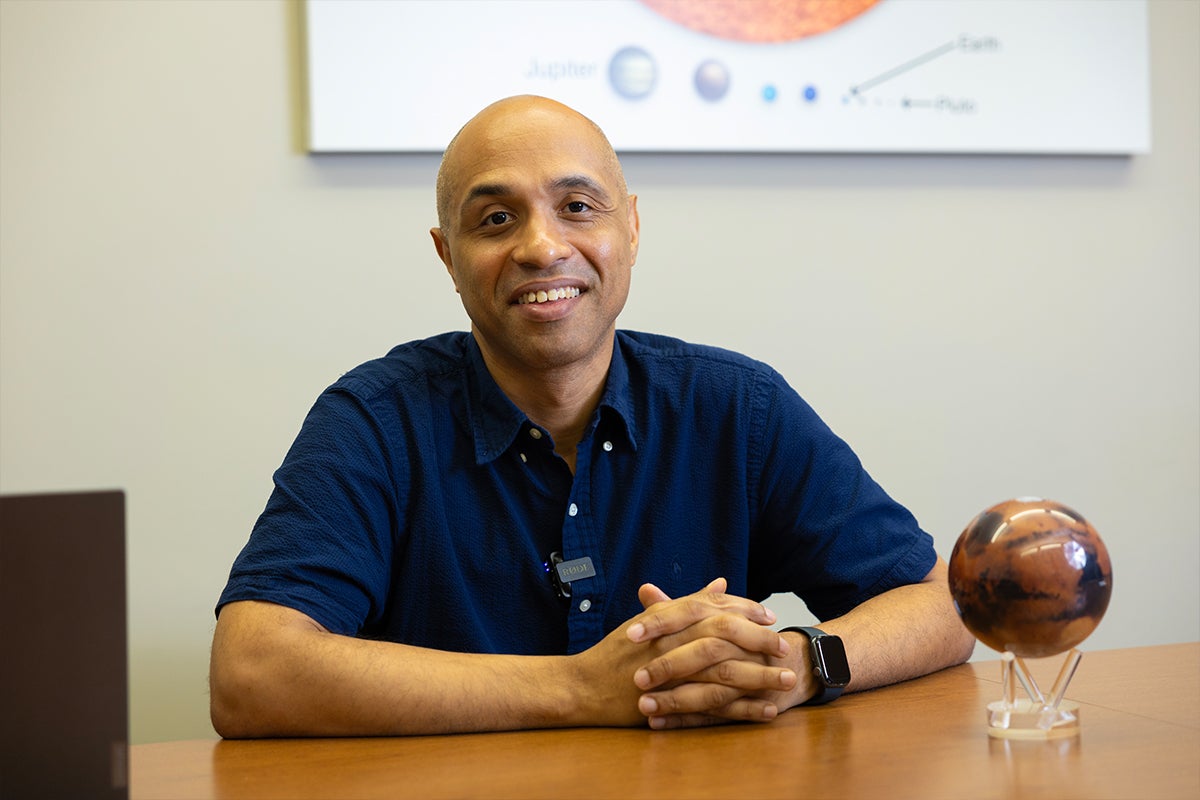Mars remains a promising planet for colonization because of its great potential to one day become habitable.
With this in mind, planetary scientist Ramses Ramirez of UCF, in collaboration with researchers at the University of Chicago and Northwestern University, analyzed Martian climate models to investigate the possibility of using nanoparticles from Mars to warm the atmosphere and thus enable life on Mars.
The research results were published this week in the journal Advances in science, found that it might be feasible to make tiny reflective nanorods from iron and aluminum found in Martian soil and fire them into the atmosphere. There, the nanorods would concentrate sunlight on the surface, triggering a greenhouse effect that would produce surface temperatures that could be warm enough for humans to live and work there.
The researchers hope this will encourage other scientists to further investigate the feasibility of their method.
“Our team’s calculations show that the random scattering of these particles creates a greenhouse effect strong enough to warm large parts of the Martian surface,” says Ramirez.
Using nanoparticles mined from Martian soil significantly reduces the cost of terraforming and eliminates the need to ship many resources to Mars, Ramirez says. Previous proposed methods considered releasing carbon dioxide – which is in very limited supply on Mars. Others suggested producing chlorofluorocarbons – which are difficult to sustain in large quantities – but this has proven to be a significant challenge, he says.
“There have been attempts in the past to warm Mars using greenhouse gases, but that requires bringing a lot of resources from Earth and there is the question of cost,” says Ramirez. “We tried to find a more cost-effective solution that also allows for life using Martian materials from the land itself.”
How it would work
According to the study, the proposed nanorods are about 5,000 times more effective at warming Mars than previously considered approaches.
The particles, according to the theory of Ramirez and his colleagues, are smaller than commercially available glitter and would be activated by being ejected from “fountains” on Earth into the atmosphere and from there circulating around the planet.
“The interaction of these particles with the incoming sunlight would then lead to the solar energy being preferentially scattered forward towards the surface,” says Ramirez. “This would then cause a very strong greenhouse effect and we could warm the earth by several tens of degrees.”


(Courtesy of Aaron M. Geller, Northwestern, Center for Interdisciplinary Exploration and Research in Astrophysics)
Research background and methods
The project was started nearly five years ago by Edwin Kite, a planetary scientist and associate professor at the University of Chicago. Ramirez and Kite had collaborated to test their theories, and they had used Ramirez’s single-column model to compare with Northwestern University’s 3D model.
Both models proved useful in determining the interaction between the nanorods and the Martian atmosphere, Ramirez says. Ultimately, both models showed that nanorods are very effective at heating Mars, the study says.
“The 3D model is very detailed and can capture the spatial range and circulation patterns better, but my model is a bit simpler and includes many of the relevant physics,” he says. “With a single-column model, you can look at a larger range of parameters in a shorter time and assess the effects of solar radiation on the atmosphere a bit more precisely. So it was good to combine these approaches and find out where the limitations of these different models are.”
Ramirez says he is intrigued by the prospect of potentially colonizing other planets – especially Mars.
“I think it’s very important to warm the atmosphere of Mars because we would be expanding,” he says. “I see this as an obligation of humanity. We owe it to ourselves to go beyond our cradle.”
Alien colonies
Ramirez believes that exploring and terraforming other potentially habitable planets has value beyond colonization. These efforts could provide valuable scientific insights that could benefit everyday life on Earth, he says.
“It’s good for our own growth as a species to experience technological advances that may also have side effects,” says Ramirez. “The challenge of terraforming Mars would produce new technologies that would ultimately benefit people here on Earth.”
Although the study is theoretical in nature and based on model calculations, Ramirez is confident that engineers and other scientists can use this knowledge to conduct further experiments and thus help realize the dream of a Mars colony.
“This could be a great starting point,” he says.
Samaneh Ansari, a graduate student at Northwestern University, served as lead author and helped conduct the research in the lab of Hooman Mohseni, a professor in the university’s Department of Physics and Astronomy and Department of Electrical and Computer Engineering. Kite conceived and conducted the research while writing the manuscript. His former colleague at the University of Chicago, postdoctoral researcher Liam Steele, also conceived the research. All researchers helped conceptualize the research and contributed content and changes to the final manuscript.
UCF Researcher Qualifications
Ramirez joined UCF in 2021 and is a planetary scientist and assistant professor in UCF’s Department of Physics who develops theoretical models that simulate the atmospheres of potentially habitable planets such as Mars. He received his bachelor’s degree in aerospace engineering from the Georgia Institute of Technology in 2001 and his master’s degree in planetary geology from Arizona State University in 2009. Ramirez received his dual doctorate in earth sciences and astrobiology from Pennsylvania State University in 2014. Before joining UCF, he worked as a research associate at Cornell University and later as a scientist at the Earth-Life Science Institute in Tokyo.

